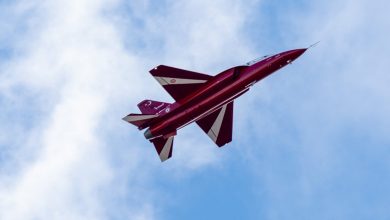JWST sees a Milky Way-like galaxy coming together in the early universe

The gigantic galaxies we see in the universe today, including our own Milky Way galaxy, started out far smaller. Mergers throughout the universe’s 13.7 billion years gradually assembled today’s massive galaxies. But they may have begun as mere star clusters.
In an effort to understand the earliest galaxies, the JWST has examined their ancient light for clues as to how they became so massive.
The JWST can effectively see back in time to when the universe was only about 5% as old as it is now. In that distant past, structures that would eventually become as massive as the Milky Way, and even larger, were only about 1/10,000th as massive as they are now. What clues can the powerful infrared space telescope uncover that show us how galaxies grew so large?
A new paper presents JWST observations of a galaxy at redshift z~8.3. At that redshift, the light has been traveling for over 13 billion years and began its journey only 600 million years after the Big Bang. The galaxy, called the Firefly Sparkle, contains a network of massive star clusters that are evidence of how galaxies grow.
The paper is “The Firefly Sparkle: The Earliest Stages of the Assembly of A Milky Way-type Galaxy in a 600 Myr Old Universe.” The lead author is Lamiya Mowla, an observational astronomer and assistant professor of Physics and Astronomy at Wellesley College. The paper is in preprint on arXiv and hasn’t yet been peer-reviewed.
Despite the JWST’s power, this distant, ancient galaxy is only visible through the gravitational lensing of a massive cluster of foreground galaxies. The lensing makes the Firefly Sparkle appear as an arc. Two other galaxies are also in the vicinity, called Firefly BF (Best Friend) and Firefly NBF (New Best Friend.)
“The Firefly Sparkle exhibits the hallmarks expected of a future Milky Way–type galaxy captured during its earliest and most gas-rich stage of formation,” the authors write. The young galaxy’s mass is concentrated in 10 clusters, which range from about 200,000 solar masses to 630,000 solar masses. According to the authors, these clusters “straddle the boundary between low-mass galaxies and high-mass globular clusters.”
These clusters are significant because they’re clues to how the galaxy is growing. The researchers were able to gauge the ages of the clusters and their star formation histories. They found that they experienced a burst of star formation at around the same time. “The cluster ages suggest that they are gravitationally bound with star formation histories showing a recent starburst possibly triggered by the interaction with a companion galaxy at the same redshift at a projected distance of ~2 kpc away from the Firefly Sparkle.”
There are two candidates for the interacting galaxy: Firefly Best Friend (BF) and Firefly New Best Friend (NBF). But NBF is about 13 kpcs away, while BF is about two kpcs away, making BF the likely interactor. “Faint low-surface brightness features are visible at the corners of the arc close to the neighbor, hinting at a possible interaction between the two galaxies [FS and BF] which may have triggered a burst of star formation in both of them,” explain the researchers.
The researchers paid special attention to the central cluster. They found that the temperature is extremely high at about 40,000 Kelvin (40,000°C; 72,000°F.) It also has a top-heavy initial mass function, a signal that it formed in a very metal-poor environment. These observations and other evidence show that Firefly Sparkle is very likely a progenitor of galaxies like ours. For these reasons, “… the Firefly Sparkle provides an unprecedented case study of a Milky Way-like galaxy in the earliest stages of its assembly in only a 600 million-year-old universe,” the authors write.
Fortunately, the researchers behind these results have a powerful supercomputer simulation to compare observations with. It’s called Illustris TNG. It’s a massive cosmological magnetohydrodynamical simulation based on a comprehensive physical model of the universe. Illustris TNG has made three runs, called TNG50, TNG 100, and TNG 300. The researchers compared their results with TNG 50.
Finding these ancient star clusters is intriguing, but we can’t assume they’ll survive intact. There are tidal and evaporative forces at work. The authors examined the stability of the individual star clusters and how they’ll fare over time.
“Most of these star clusters are expected to survive to the present-day universe and will expand and then get ripped apart to form the stellar disk and the halo of the galaxy,” the authors explain. “The only way they survive is to get kicked out to large distances, away from the dense tidal field of the galaxy.” The ones that get kicked out may persist as globular clusters.
One of the JWST’s primary science goals is to study how galaxies formed and evolved in the early universe. By finding one in which clusters are still forming, the space telescope is reaching its goal.
“The Firefly Sparkle represents one of JWST’s first spectrophotometric observations of an extremely lensed galaxy assembling at high redshifts, with clusters that are in the process of formation instead of seen at later epochs,” the authors conclude.





